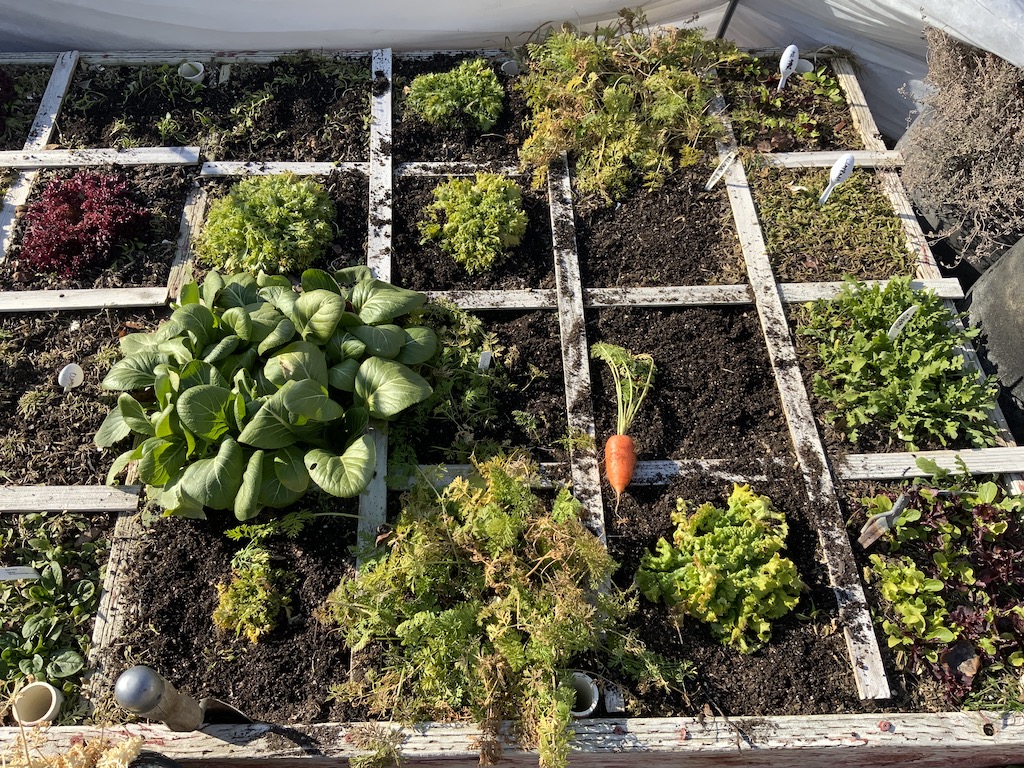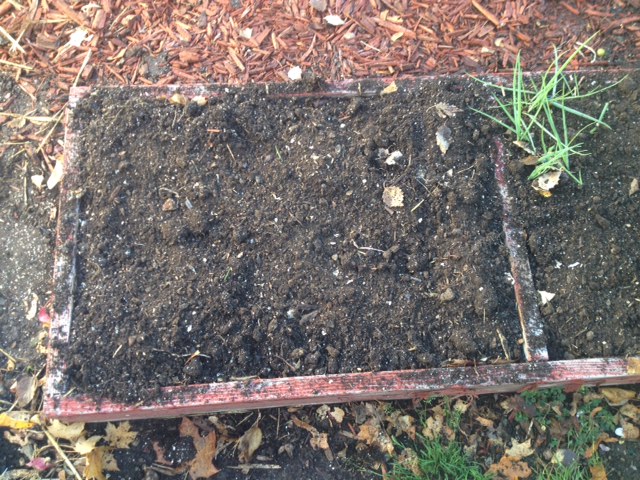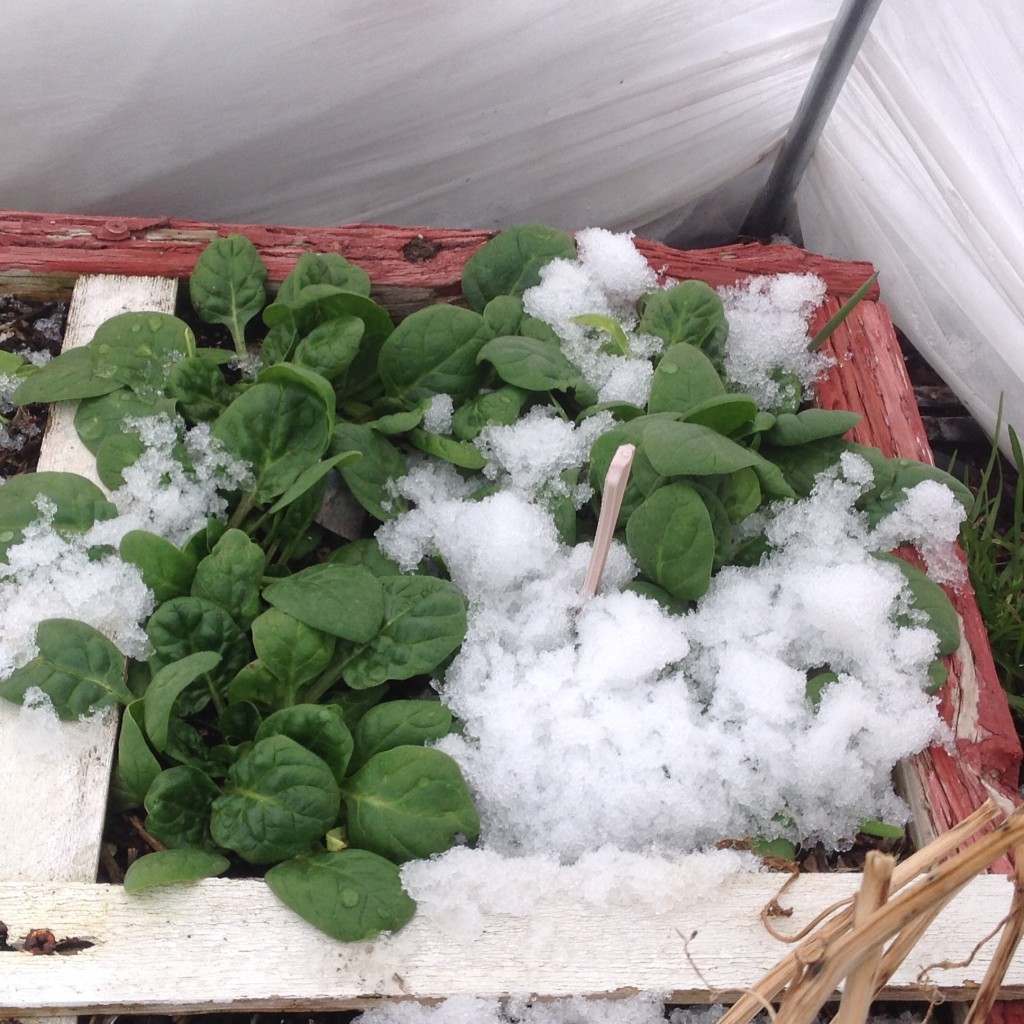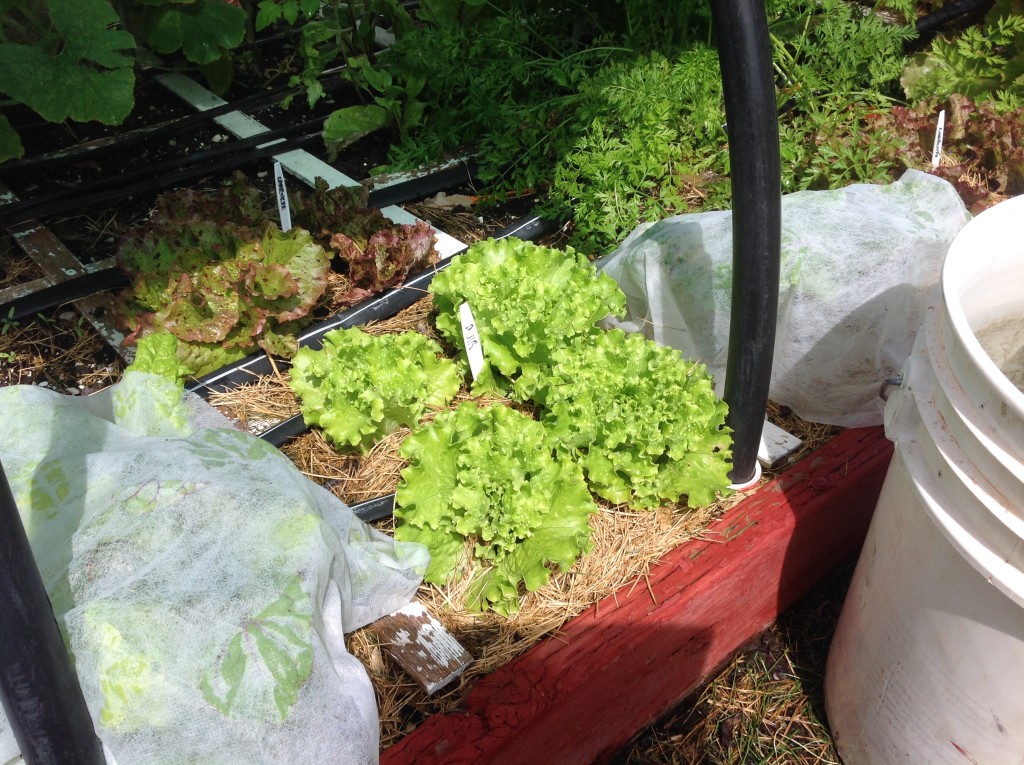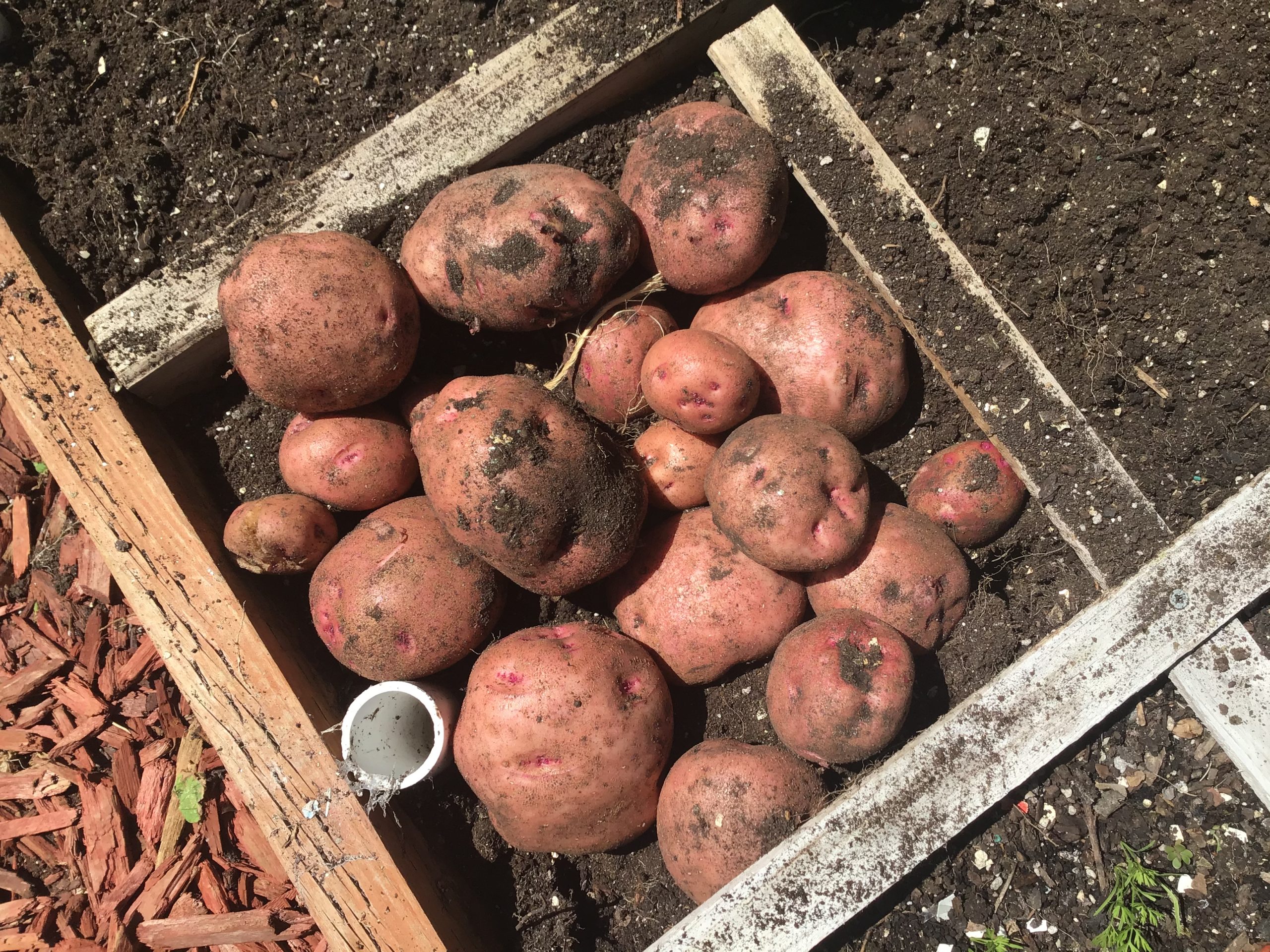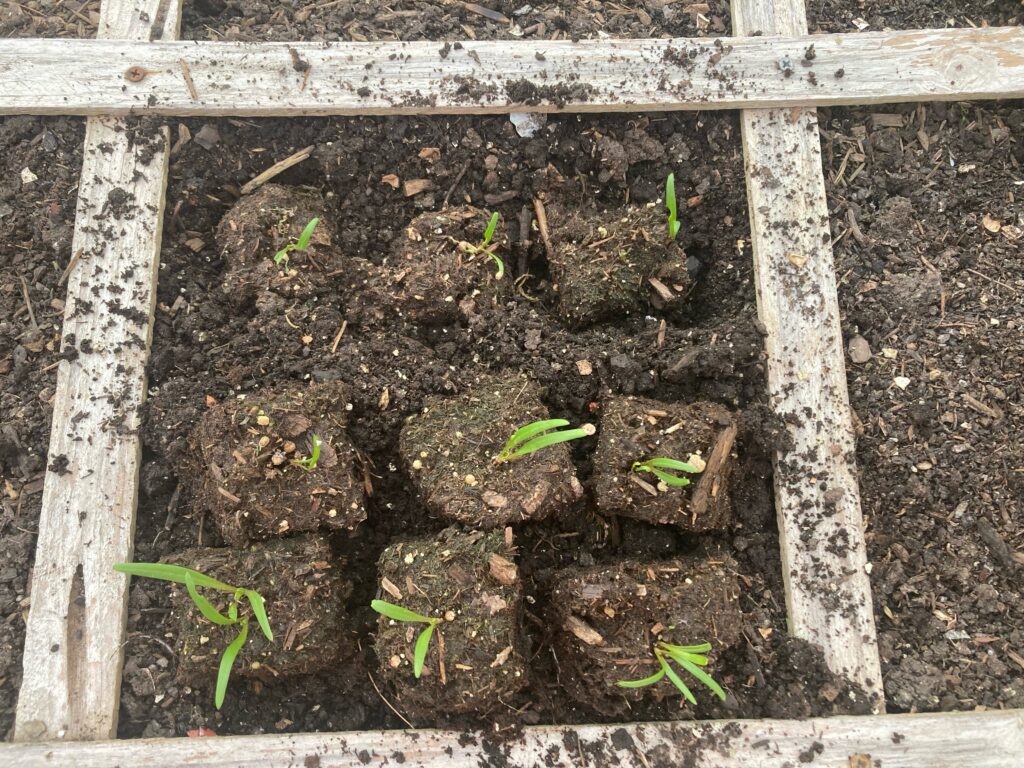 Planted with soil block on 2/12 and placed in the garden on 3/8. This spinach is ready to go in a little over 3 weeks from start to planting. If you haven’t learned about soil blocking-you should check into it. No fancy soil needed, no replacing the ever cracking 6-cell plastic containers, transplant shock minimized, and little work to do indoors.
Planted with soil block on 2/12 and placed in the garden on 3/8. This spinach is ready to go in a little over 3 weeks from start to planting. If you haven’t learned about soil blocking-you should check into it. No fancy soil needed, no replacing the ever cracking 6-cell plastic containers, transplant shock minimized, and little work to do indoors.
Soil blocking can be one of the strategies used for an extra early spring garden provided you’ve got some kind of protection from the elements. It doesn’t have to be fancy either. Four pieces of rebar, some sturdy PVC, and 4-6 mil UV protected plastic can give you all that’s needed.
If you’d like to learn how to soil block and to also have a really early spring garden, you can follow my class schedule here on this site. Classes are held at public locations but also in a very comfortable environment at my home. Space is always limited and I never have enough room for everyone who wants to attend, but I try my best. I’ll even teach you how to do it on a budget so you don’t have to buy the fancy soil block unit that will cost you about $50-60.
For those who might be interested in learning how to be a square foot gardener, my class on that is Saturday, April 20th at my home. I’ve only got 3 more seats available. Imagine, a garden where you don’t have to weed or thin. A garden that gives you 100% of the harvest in only 20% of the space. No hard work. No heavy digging. No need to root-till. It’s the way to go. Details can be found on this home page.
